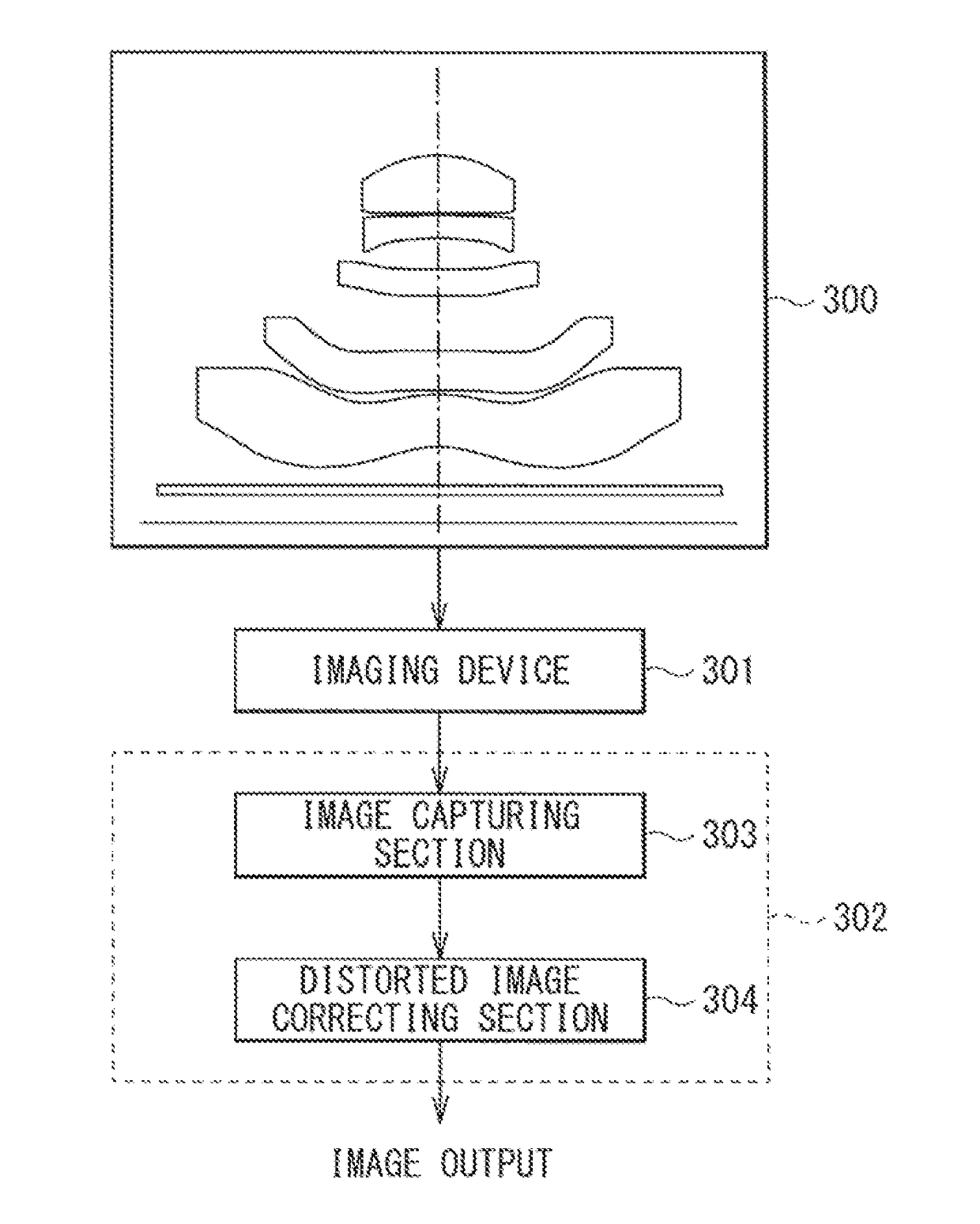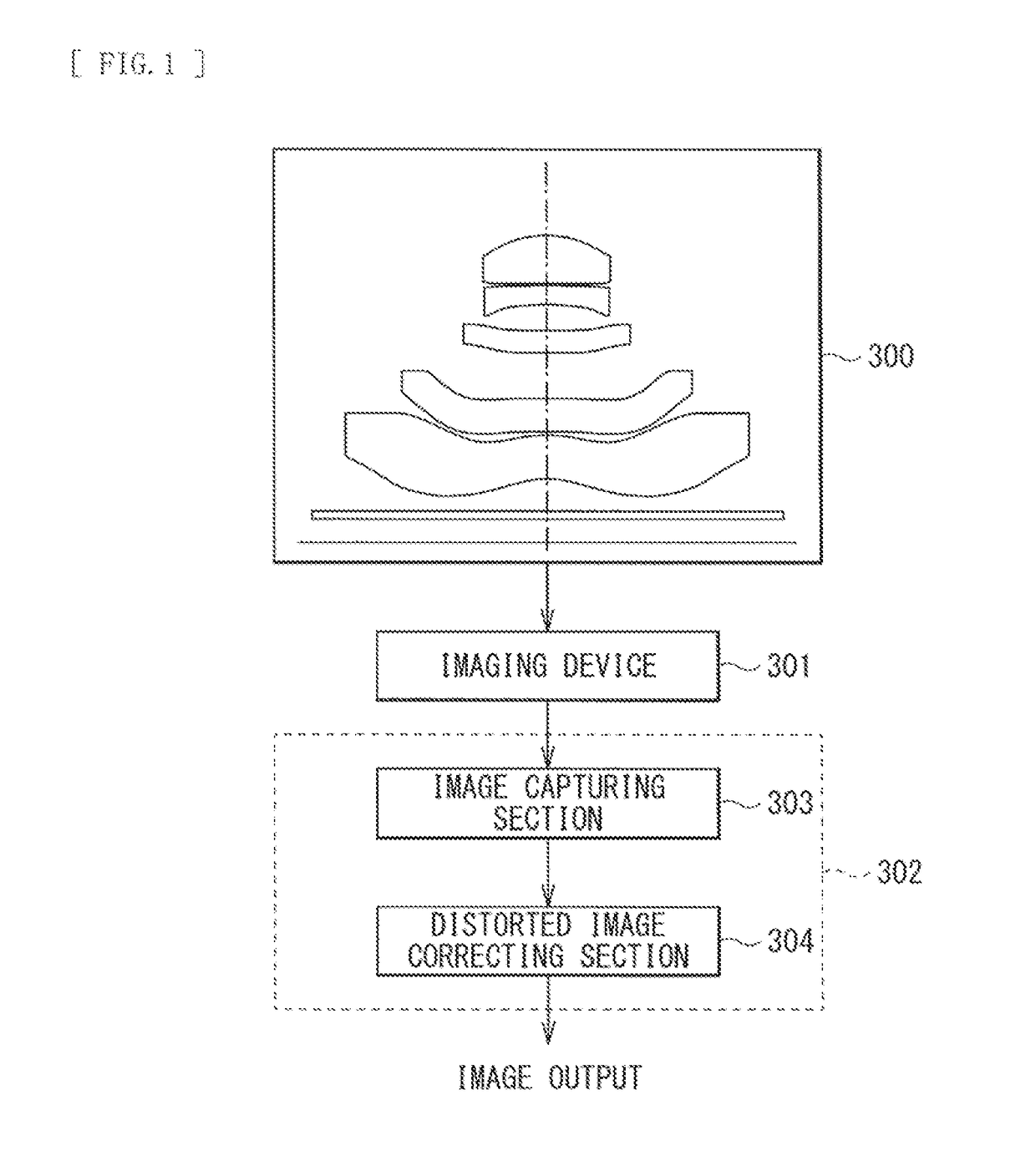Imaging device and imaging lens
a technology of imaging lens and imaging device, which is applied in the field of imaging device using an imaging lens, to achieve the effect of good balance and secure high optical performan
- Summary
- Abstract
- Description
- Claims
- Application Information
AI Technical Summary
Benefits of technology
Problems solved by technology
Method used
Image
Examples
numerical example 1
[0062]The imaging lens 1 illustrated in FIG. 2 is a lens system substantially configured of the first lens L1 to the fifth lens L5. The front-group lens system Gp1 is substantially configured of the first lens L1 to the third lens L3. The rear-group lens system Gp2 is configured of the fourth lens L4 and the fifth lens L5. The lens surface of the fifth lens L5 on the image side is concave on the image side near the optical axis, and convex on the image side around the periphery. The seal glass SG is disposed between the fifth lens L5 and the image forming surface IMG. The aperture stop is disposed in the vicinity of the front side of the first lens L1.
[0063]Table 1 shows lens data of Numerical example 1 to which specific numerical values are applied to the imaging lens 1, together with values of the focal length f of the entire lens system, the F number, and the full angle of view 2ω. In the imaging lens 1, both surfaces of each of the first lens L1 to the fifth lens L5 are aspheric...
numerical example 2
[0066]The imaging lens 2 illustrated in FIG. 4 is a lens system substantially configured of the first lens L1 to the fifth lens L5. The front-group lens system Gp1 is substantially configured of the first lens L1 to the fourth lens L4. The rear-group lens system Gp2 is configured of the fifth lens L5. The lens surface of the fifth lens L5 on the image side is concave on the image side near the optical axis, and convex on the image side around the periphery. The seal glass SG is disposed between the fifth lens L5 and the image forming surface IMG. The aperture stop is disposed in the vicinity of the front side of the first lens L1.
[0067]Table 3 shows lens data of Numerical example 2 to which specific numerical values are applied to the imaging lens 2, together with values of the focal length f of the entire lens system, the F number, and the full angle of view 2ω. In the imaging lens 2, both surfaces of each of the first lens L1 to the fifth lens L5 are aspherical. Table 4 shows valu...
numerical example 3
[0069]The imaging lens 3 illustrated in FIG. 6 is a lens system substantially configured of the first lens L1 to the fifth lens L5. The front-group lens system Gp1 is substantially configured of the first lens L1 to the third lens L3. The rear-group lens system Gp2 is configured of the fourth lens L4 and the fifth lens L5. The lens surface of the fifth lens L5 on the image side is concave on the image side near the optical axis, and convex on the image side around the periphery. The seal glass SG is disposed between the fifth lens L5 and the image forming surface IMG. The aperture stop is disposed in the vicinity of the front side of the first lens L1.
[0070]Table 5 shows lens data of Numerical example 3 to which specific numerical values are applied to the imaging lens 3, together with values of the focal length f of the entire lens system, the F number, and the full angle of view 2ω. In the imaging lens 3, both surfaces of each of the first lens L1 to the fifth lens L5 are aspheric...
PUM
 Login to View More
Login to View More Abstract
Description
Claims
Application Information
 Login to View More
Login to View More - R&D
- Intellectual Property
- Life Sciences
- Materials
- Tech Scout
- Unparalleled Data Quality
- Higher Quality Content
- 60% Fewer Hallucinations
Browse by: Latest US Patents, China's latest patents, Technical Efficacy Thesaurus, Application Domain, Technology Topic, Popular Technical Reports.
© 2025 PatSnap. All rights reserved.Legal|Privacy policy|Modern Slavery Act Transparency Statement|Sitemap|About US| Contact US: help@patsnap.com



